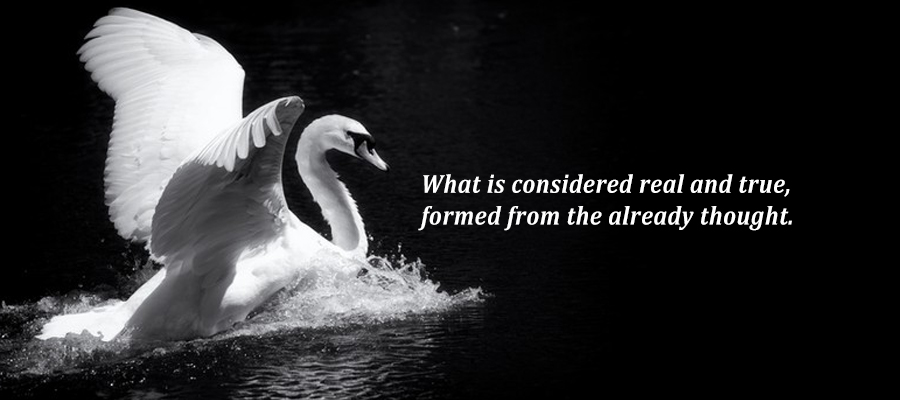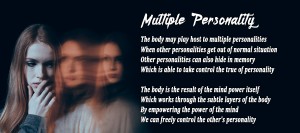Wisdom is the means we take to escape ignorance – and ignorance is our ordinary way of life, the way of suffering. So wisdom is our Way Out.
After all, ignorance is our way of knowing best, our daily way, the wrong pursuit of all that brings us sorrow and misery, conditions we tend to naturally encounter. Our egoism leads us there, as does our anger, our cruelty, our lust, our ignorance, and our inability. All our vices lead to ignorance and hence suffering.
Wisdom, being seldom traveled, is a sublime way not easily traced or stored, a way of happy discipline. Malcolm is the goal; discipline is the way to get there. The search for the wrong knight, the progress of the wayward pilgrim, the journey of the would-be hero – all of these are allegories of our journey to wisdom, to transcendent states beyond human achievement, but not beyond our aspirations.
Mistakes are our natural course, and Ignorance is our natural goal. Only by acting in a supernatural, transcendental manner can we move towards Wisdom.
Our eyes are one of the five specific ways our minds form images of the world. The eye is a wonderful instrument which has certain characteristics which help us process the light we see in such a way that our thoughts can create meaning from it.
Films, scanning images for television, and the sequential reproduction of the flickering visual images they produce work in part, due to an optical phenomenon called the persistence of vision and its psychological counterpart, phi phenomena – mental bridges that the mind forms to conceptually complete the gaps between the frames or pictures. The persistence of vision also plays a role in keeping the world from being pitch black every time we blink.
Whenever light hits the retina, the brain maintains that impression of light for about a tenth of a second – depending on the brightness of the image – after the light source is removed from the eye. This is due to a prolonged chemical reaction. As a result, the eye cannot clearly distinguish the rapid changes in light that occur earlier than this retention period. These changes go unnoticed or appear to be a continuous picture for human observers. This basic fact of the way we look at it has been used to our advantage.
When we go to the movies, we know that a film creates the illusion of a screen constantly flashing by successively flashing separate individual photos. Even though the movie screen appears to be constantly on, it is actually dark at half the time. The flickering image on the screen gave rise to the old term “film” in the early days of film. Today’s movies display images on the screen at a flicker-free speed of 24 frames per second.
Television, too, uses intricate forms of intermittent light impulses to construct the images we see. If an image can be formed in less than a tenth of a second, the eye will not realize that this process is even happening. In fact, it will and does appear as if the image is on all the time.
Simply put, if you can create at least ten images per second, you can maintain the illusion of a picture or a continuous image. You may remember the little “flipbook” you might make as a child working on this same principle. The more images per second, the smoother the image will appear.
I Think, Because Of That I See
Biologists tell us that the eye does not function to imitate the world we encounter, but to perceive, process and encode the movements, patterns, and colors of the light we see into something our minds will interpret. Our minds interpret the data provided to us by our eyes in respect of all the other organs that respond to our environment. It combines this new data with similar information that has already been stored in our memories. As a result, no two people see anything that is exactly the same.
Now that the default settings we have in mind, operate in pretty much the same way. We develop thought patterns or mental models that shape what we “see” or “feel” and thus what we think and how we will choose to think about new information that comes to us. We hold on to or hold on to thoughts that correspond to mental images or mental models that we have formed in our minds. So as we move from one scene to another in our lives, our thoughts fill the gaps between our experiences with the same old thoughts. It connects our thoughts and experiences in such a way that they are consistent and uniform with what we have already thought.
Call it constant thinking. We see what makes sense to us. We form a picture of ourselves and develop beliefs and opinions around what is consistent with what’s already in our heads. Anything that doesn’t fit the description or contradicts our current ideas or thoughts, seems unnoticed or consciously ignored, so that we can maintain that continuous, unbroken picture of our world.
Just as what we see is governed by what we think, so too what we perceive to be real – our feelings, thoughts, and assumptions – is based on what we think is real.
Our minds are constantly trying to make sense of the world. We attract different information and our minds try to relate it to what we already know. To facilitate this process, we create mental models that filter out everything we experience.
International consultant and writer Luc de Brabandere reminds us in his book The Forgotten Half of Change, “This is not a matter of intelligence, but one of our perceptions of the world around us …. We see and hear things in a variable and of course different ways. one another, because only the hardware is common to all of us. We can even become blind or deaf when faced with situations that will become striking evidence for others. Therefore, it is not surprising that, from time to time, we get stuck. “Stuck in the same old thinking.
A self-validating illusion
The mental gymnastics that the mind goes through can stabilize us, but it can also throw us out of sync, catch up and act on what doesn’t really exist or isn’t even right. We often find ourselves reacting to people and situations in inappropriate ways, due to our imprecise reality. If our thinking is wrong we will also be wrong.
In addition, it can cause us to become rigid and unteachable and thus hinder our growth and the growth of others. This is especially true when something is discussed or brought to our attention that is incompatible with what we want, our rationalizations, or more importantly how we think or see ourselves.
US Supreme Court Judge Benjamin Cardozo, known for his integrity and elegant opinion once said,
“In the life of the mind as in life elsewhere, there is a tendency toward type of reproduction”
In other words, we like to keep thinking about the same things we always think, and this doesn’t seem any clearer than the things we think of ourselves. We tend to think about things about ourselves that make us feel good and that keep all of our thoughts connected and flowing together smoothly. We often surround ourselves and get feedback from people who think like us and it will strengthen our view of ourselves. We generally dislike the thoughts or the world around us that make waves, especially when it affects our self-image.
We tend to view our problems too with the same lens or point of view that we always have. The first-century philosopher Epictetus observed that;
In other words, we like to keep thinking about the same things we always think, and this doesn’t seem any clearer than the things we think of ourselves. We tend to think about things about ourselves that make us feel good and that keep all of our thoughts connected and flowing together smoothly. We often surround ourselves and get feedback from people who think like us and it will strengthen our view of ourselves. We generally dislike the thoughts or the world around us that make waves, especially when it affects our self-image.
We tend to view our problems too with the same lens or point of view that we always have. The first-century philosopher Epictetus observed that;
not the things themselves that bother us, but the opinions we have about those things.
Moments later Shakespeare echoed this thought by writing;
Nothing is good or bad, but thinking makes it so.
Thinking about ourselves or seeing situations in the wrong way can literally punish us for reliving the same lives and situations over and over again. Our life will not change until we change our thinking.
Writers Yoram (Jerry) Wind and Colin Crook explain in The Power of Impossible Thinking,
Increasingly we live in a familiar world can be considered a benign illusion, because it helps us move through the world efficiently, but it is still an illusion.
The meaning is what we think is all in our heads. We filter what we feel. We see what we want to see and call it real or true. It is important to realize that what we think is actually shaped by what we already think.
This should cause us to proceed with caution, but too often we go ahead with the belief that we “know” what we think we know. We need to rethink our assumptions with humility. We need to ask ourselves whether what we are thinking or feeling is because of what we have programmed our minds to see. We need to wonder if the problems we see in others enter through our filters because they are part of our own thinking.
In general, we ignore reality for the sake of the truth that we create in our own heads. In Confronting Reality, authors Larry Bossidy and Ram Charan agree that we generally see the world the way we want it. They wrote,
Avoiding reality is a fundamental and ubiquitous human tendency. Most people often do it unconsciously but may also do it consciously; sometimes there seems to be no choice.
It’s easy for us to get stuck and think about ourselves the way we always think about ourselves. The problem is that it warps reality by blocking truths we might learn. So we make up myths about ourselves.
Myths are often more dangerous than lies. The myths we make up about ourselves can be more dangerous than the lies we tell about ourselves. We can identify lies and we know they exist. They are intentional. But the myth remains, persuasive and automatic that we deceive ourselves. Our own mythology distracts us from growth. Once again, we become people who don’t want to learn. We become teachable.
We often think things don’t apply to us because we’ve thought them through. But as we grow, we must begin to discover the deeper meaning of what we thought we knew at least. There may still be room for improvement, we don’t see it. So we need to rethink, rearrange, repeat over and over again. To learn we need to forget. And in order to grow, we must change the way we think about ourselves.
Once again in The Power of Impossible Thinking the author explains,
If we can understand that most of what we see and think at any given moment comes from within and not from eternal stimuli, we are making a huge leap forward.
Anaïs Nin, in a more vivid moment wrote,
We don’t see things as they are, we see things as they are.
Emerson wrote,
People only see what they are ready to see.
As we go about each day, our experiences and observations change us. So, what we didn’t see yesterday we might see today, but only if we consciously go over old material in our heads and challenge what we think about ourselves on a daily basis.
Unless we make a conscious effort to break this cycle, this persistent thinking, we will continue to reproduce previous thoughts. It’s a self-reinforcing cycle that gets us nowhere. Left unchecked, this mental inertia will cause us to lose the benefits of experience, observation, and self-study. Neither personal growth nor growth in our knowledge base is logical and automatic. It takes doing what we are not inclined to do and that takes a lot of effort. Often getting out of our own way is the first step in the growth process.
Significantly, that growth depends on questions we ask ourselves, not the answers we are used to. Author Antony Jay reveals that,
An uncreative mind can find wrong answers, but it takes a creative mind to find wrong questions.
What is needed is a creative mind that can shift gears and see from a new perspective. We need better questions, not the same old answers. If we don’t grow and deepen our understanding, we don’t ask the right questions.
Ask questions that cause us to rethink our assumptions. Is the problem really a problem? Is what I do or think work for me? What should I stop or start thinking or doing to change the situation?
Part of the problem is that the solutions often go against what we already think – which is why we get stuck. Thinking outside of normal frames of reference makes it possible to see unexpected solutions. Seeing things differently or from someone else’s point of view often puts solutions into focus dramatically.
Moving forward from persistence of mind requires that we see our thoughts in a new light and then reconstruct them. We have to start challenging the way we think and as a result the way we act. New behavior will follow from a new way of thinking.
Everyone has the opportunity to be wise and take advantage of the good things that wisdom gives. To achieve this, he must see the greatness of God and live his life in this world as His proper servant. One who understands this means following the most correct path. Because the only guideline that really guides and shows the right way to believers.
The mind of one who obeys the calling of the soul is freed from all the bad things that clog it and becomes clean and pure. What gives this clarity of mind is the clear logic and correct thinking abilities that are attained through faith. The understanding of a person grows more and more when it is purified from the logic and thinking of ignorant people, and the defilements that this kind of life creates. When he became free from all unwholesome habits, he also became free from the restraints of his mind, and thus became one of the wise men mentioned in the holy texts. Failing this, his mind will be filled with obstacles and he will consciously lead himself to destruction.





